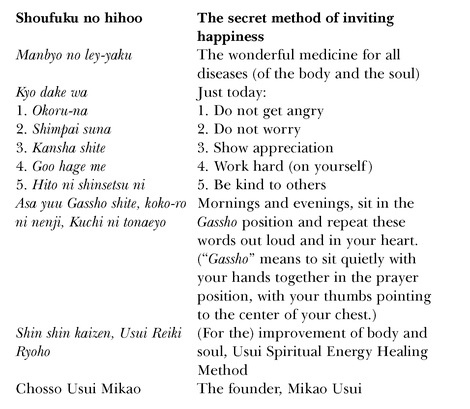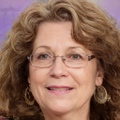
Reiki’s Development In Japan
Table of Contents
It is a cultural standard in Japan that knowledge or vital information is kept secret (or sacred, as the terms are similar in the Japanese language) among family circles, which is why it has taken so long to correct information about Reiki's development in Japan arrive in the West.
Dr. Usui is thought to have initially used Reiki exclusively over himself and his family, and Reiki is said to have cured his wife of a severe disease at the time. However, he recognized the significance of his discovery and began teaching others how to harness this healing energy, making Sho-den (the first level of Reiki training) "freely available to everyone"—a great quote from one of his training manuals, the Usui Reiki Hikkei.
There is reliable information on Usui's memorial that approximately 2,000 people learned Reiki (which he also called Teate, meaning "healing hands") from Dr. Usui. Still, most of these would have only gained the first level of training, Sho-den (which means "the entrance"), which is equivalent to First Degree in the West. Between 30 and 50 people appear to have taught the second level, Okuden (meaning "the deep inside"), equal to the Western Second Degree. But no more than 17 people appear to have learned the third level, Shinpi-den (meaning "the mystery/secret teachings"), which is equivalent to the Western Third Degree, or Reiki Master. They included five Buddhist nuns, four naval officers, and eight additional men. Still, little else is known about them, even though all of Dr. Usui's Oku-den and Shinpi-den students were registered with the Japanese Education Departments. However, some of these documents may have been lost in the earthquake which devastated Tokyo in 1925.The following ten are listed:
- Juzaburo Ushida (rear admiral)
- Kan’ichi Takatomi (rear admiral)
- Tetsutaro Imaizumi (rear admiral)
- Chujiro Hayashi (admiral)
- Haru Nagao (occupation unknown)
- Toshihiro Eguchi (school teacher)
- Yoshiharu Watanabe (philosopher)
- Sono’o Tsuboi (tea ceremony Master)
- Imae Mine (musician)
- Masayuki Okada (author of the inscription on Dr. Usui’s memorial)
Dr. Usui established his first clinic in Harajuku, Tokyo, in April 1922, where he performed and taught Reiki. His healing abilities must have been extraordinary, as he was renowned throughout Japan and admired as "the pioneer of reviving Hands-on Healing from previous generations" (as stated in his memorial). Reiki's number of people helped is reported to have been several hundred thousand, including many of those injured in the Tokyo earthquake on September 1, 1923—although this figure must include those helped by Dr. Usui's students as well those supported by him personally. (Usui gained notoriety for this painting, supposedly lauded by Taisho, the then-emperor.)
Dr. Usui's teachings placed an equal focus on spiritual enlightenment as solely physical healing. The value of self-healing was imparted, as were the benefits of living a "normal" life, all based on the Reiki ideals he adopted from the Meiji Emperor. The following is an excerpt from a paper written in Dr. Usui's handwriting (in Japanese Kanji), which has been translated and is now available in Frank Arjava Petter's book The Legacy of Dr. Usui:

In addition, Dr. Usui also utilized 125 inspirational poems (Gyosei) by Meiji Emperor Mutsuhito to guide his students' personal and spiritual development. Here is one sample of Emperor Mutsuhito's stylized Waka (also known as Tanka) poetry that Dr. Usui taught his students:
The Wave
One moment stormy
The next it is calm
The wave in the ocean
Is actually
Just like human existence
All 125 Waka poems are included in Walter Lubeck's, Frank Arjava Petter's, and William Rand's Spirit of Reiki.
He added other components of his extensive Buddhist and martial arts training into his Reiki teaching, including meditation, self-cleansing, and a simple but effective method of spiritual empowerment termed Rei-Ju and some Shinto and Ki-Ko energy practices. He appears to have treated patients intuitively, placing one or both hands anywhere he identified energy imbalances in need of mending.
As he began instructing people in Reiki, he realized the need for a manual and wrote the Usui Reiki Hikkei, which he then distributed to his pupils as a teaching aid. An English translation of Dr. Mikao Usui's manual (The Original Reiki Handbook, by Frank Arjava Petter, Lotus Press, 1999), which includes instructions for treating specific diseases and parts of the body with specific combinations from the nearly 70 hand positions that Dr. Usui teaches, has been completed by Frank Arjava Petter and Chetna Kobayashi.

Related
Chanting And Toning With Karuna Reiki
The Karuna Reiki experience taught me that toning or chanting during a Karuna Reiki session causes profound shifts in the healing energy's vibrational frequency. The Mahayana Buddhist tradition of the bodhisattva Avalokitesvhara, who creates the Sound that Illuminates the World, validates this notion.
The Ethics Of Distant Reiki Healing
The Second Degree procedures teach you how to transmit powerful healing to anybody, anywhere, at any time, including the past and future. Using the Distant (Connection) Symbol helps you to construct a bridge between you and the person (or animal) you wish to heal.
Guided Meditation To Help Heal The Shadow Self Can Change Your Life
The shadow self refers to the aspects of ourselves that have been repressed into the unconscious — the aspects of ourselves that we are insecure about, ashamed of, or frustrated with. The shadow self-concept is based on the idea that we metaphorically bury those aspects of our personalities that we fear will not be accepted, accepted, or loved by others; thus, we keep them in the shadows.
How To Build A Successful Reiki Practice - FAQs
After you've mastered the techniques necessary to perform Reiki on others in-person and remotely, it is entirely up to you to decide whether Reiki is something you wish to pursue as a more formal public practice.
Integrative And Functional Medicine —Personalized Care For The 21st Century
The goal of integrative and functional medicine is to get to the root cause of health problems and treat the whole person with a combination of approaches—optimizing health for those who have it and restoring health for those who have lost it. Integrative medicine and functional medicine are often used interchangeably, but the terms are actually referring to two different approaches to patient care.
The Karuna Reiki Attunements
A common belief is that compassionate action is captured in this non-traditional form of Reiki. When used in conjunction with Usui Reiki, it has a powerful effect on its own, but even more so.
Karuna Master Symbols and Their Uses
Other healing systems incorporate the Karuna Reiki Master symbols. For instance, The International Center for Reiki Training incorporates the Usui Dai Ko Myo, Tibetan Dai Ko Mio, and Tibetan Fire Serpent into our Usui/Tibetan Reiki Master Training.
Kuan Yin - The Goddess Of Mercy
Kuan Yin is an example of an enlightened being. Bodhisattva, or enlightened being, guards the earth. The Chinese deity Kuan Yin is revered as a symbol of compassion and love.
Possible Side Effects Of A Karuna Reiki Attunement
Becoming a Reiki practitioner with the ability to heal oneself and others is a beautiful path that allows you to make a difference in the world. While it is exciting to receive an attunement in order to increase your frequency and connection to the universal life force energy, these attunements come at a cost.
The Traditional Karuna Reiki Attunements
Karuna is typically only taught to Usui Reiki Master practitioners. There are four levels of Karuna instruction. There are four levels of mastery in this system: two for practitioners and two for masters.
Original Karuna Attunements - The Sai Baba Reiki Attunements
For those wishing to view the original Sai Baba attunement process in order to compare it to later attunements, these are included for informational purposes only. You will notice a resemblance between these and the attunements developed later.
